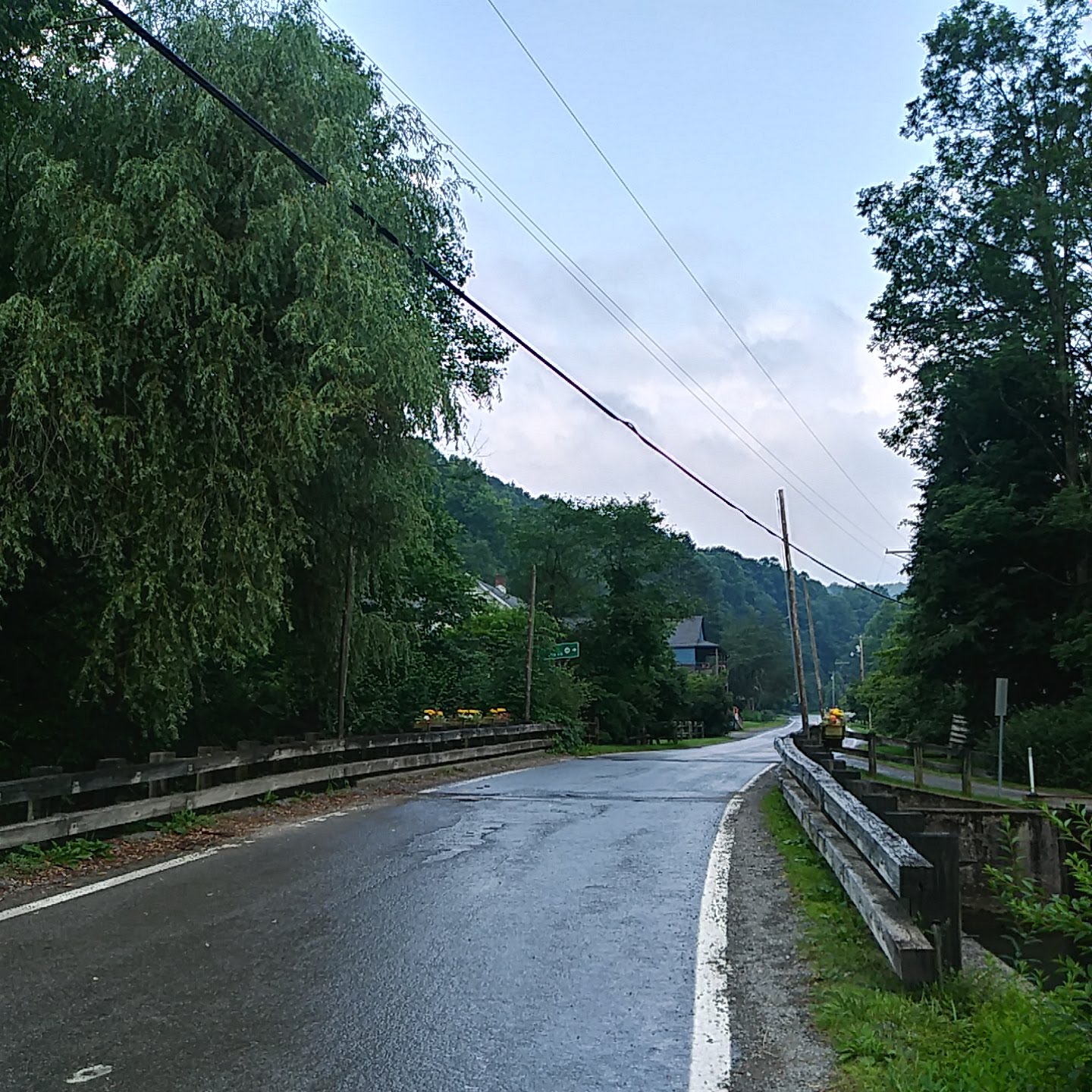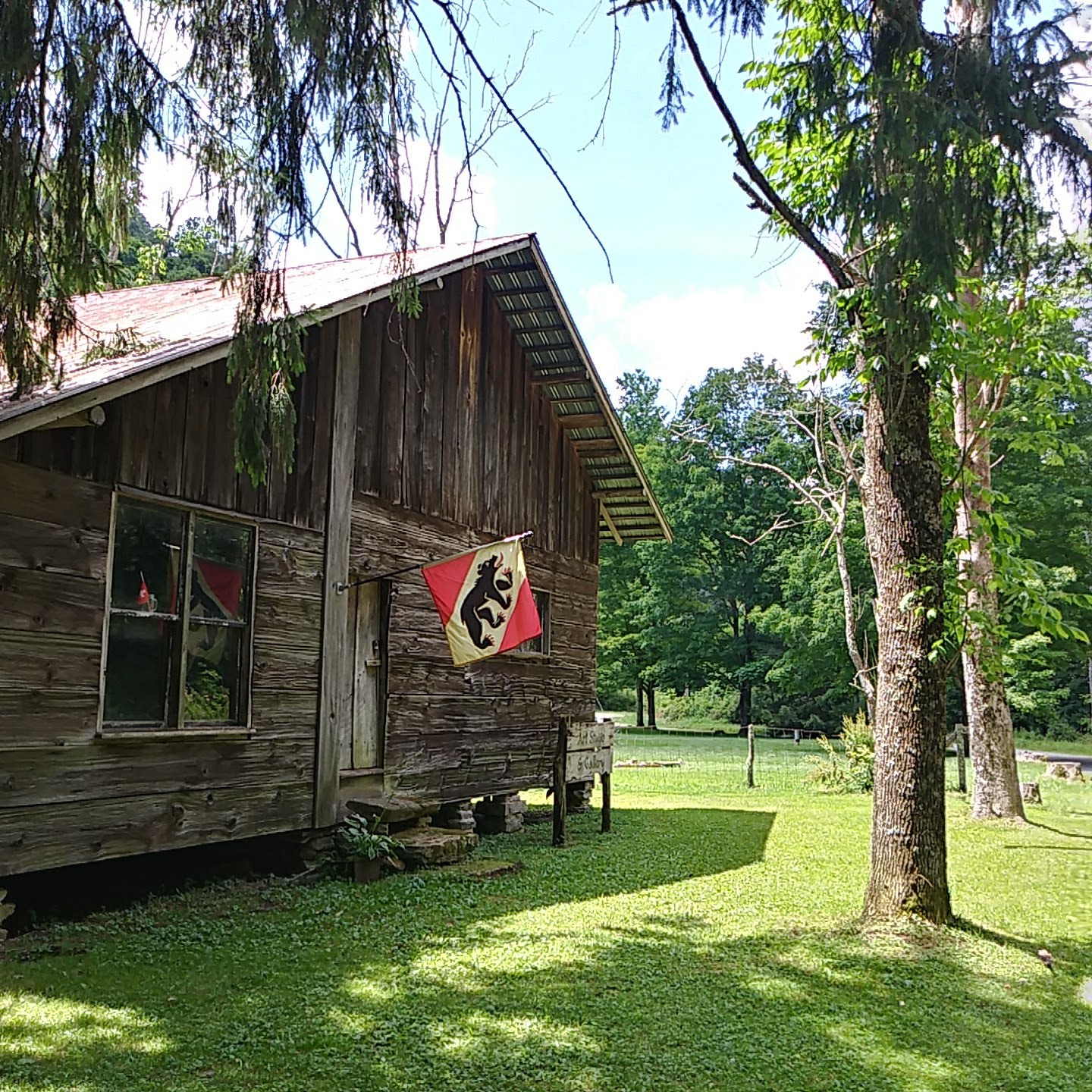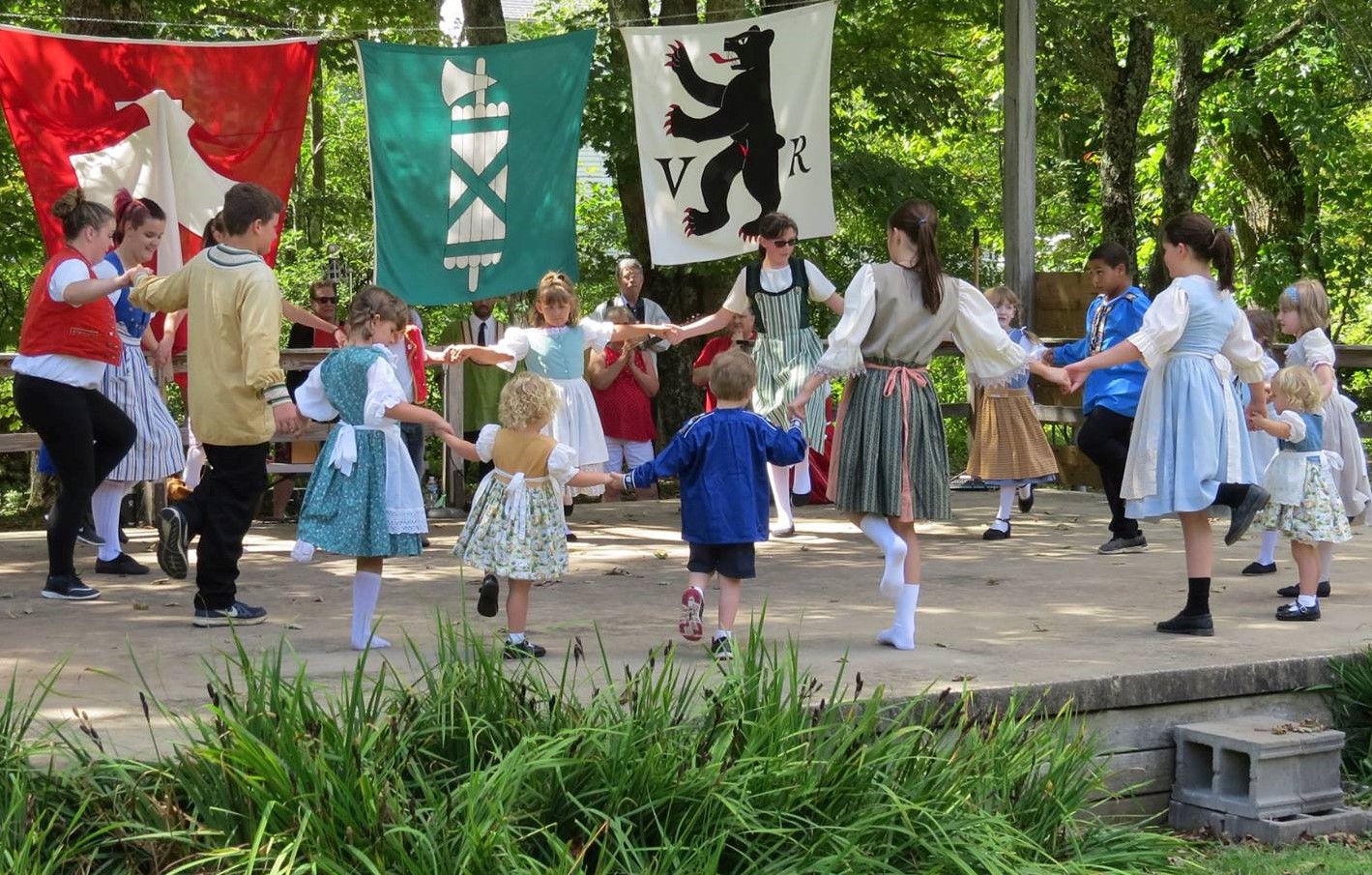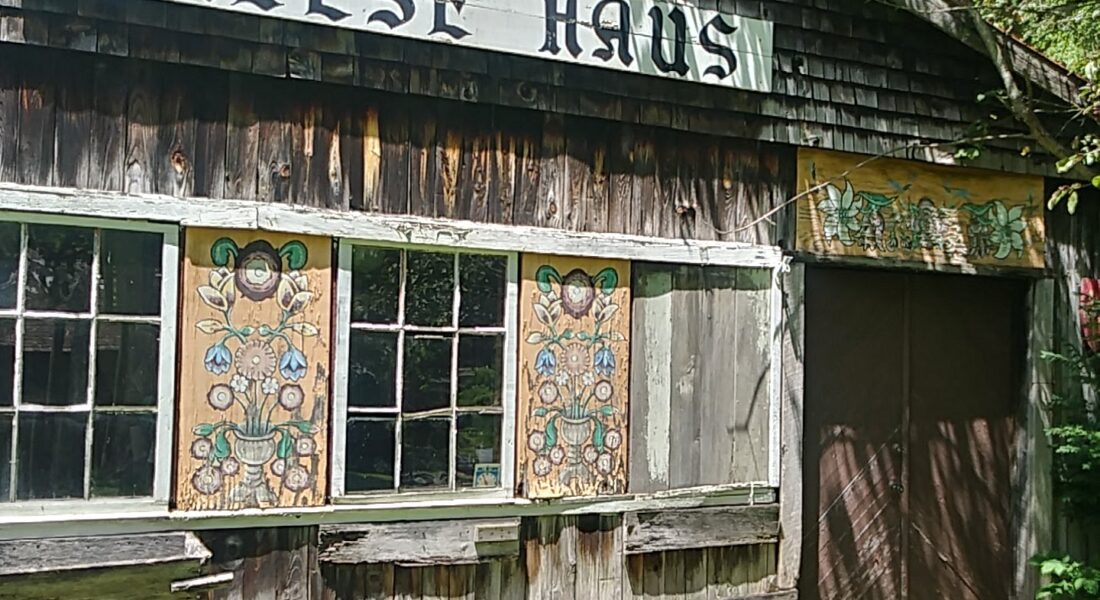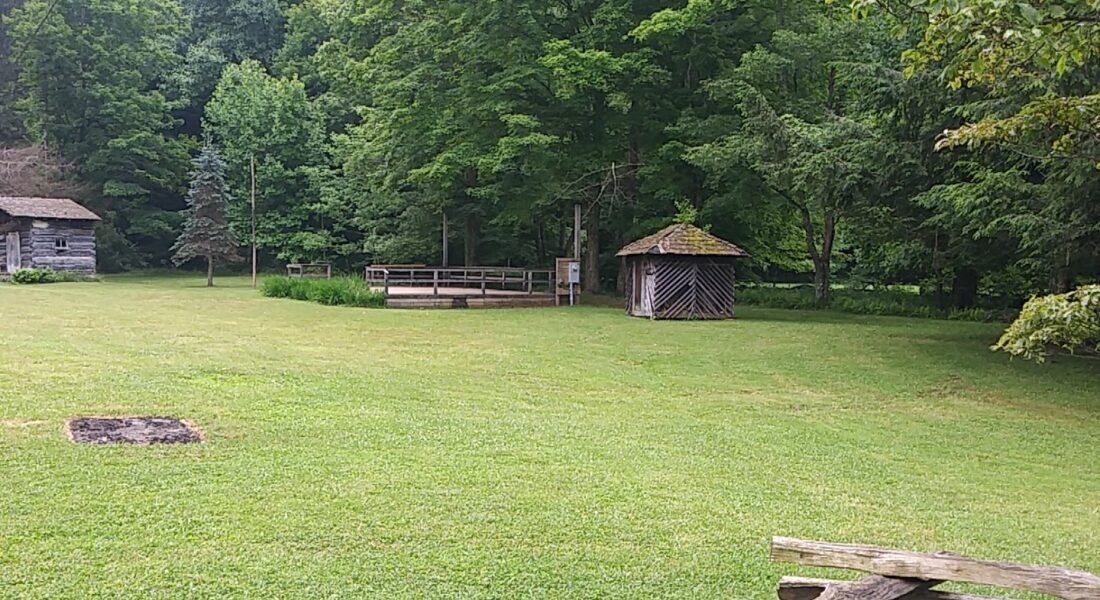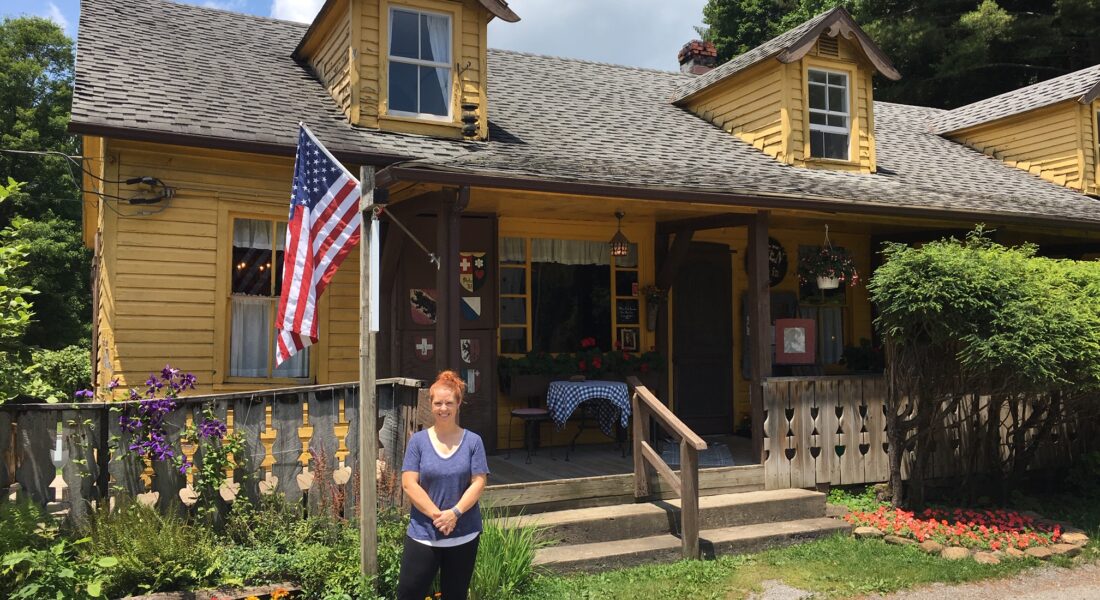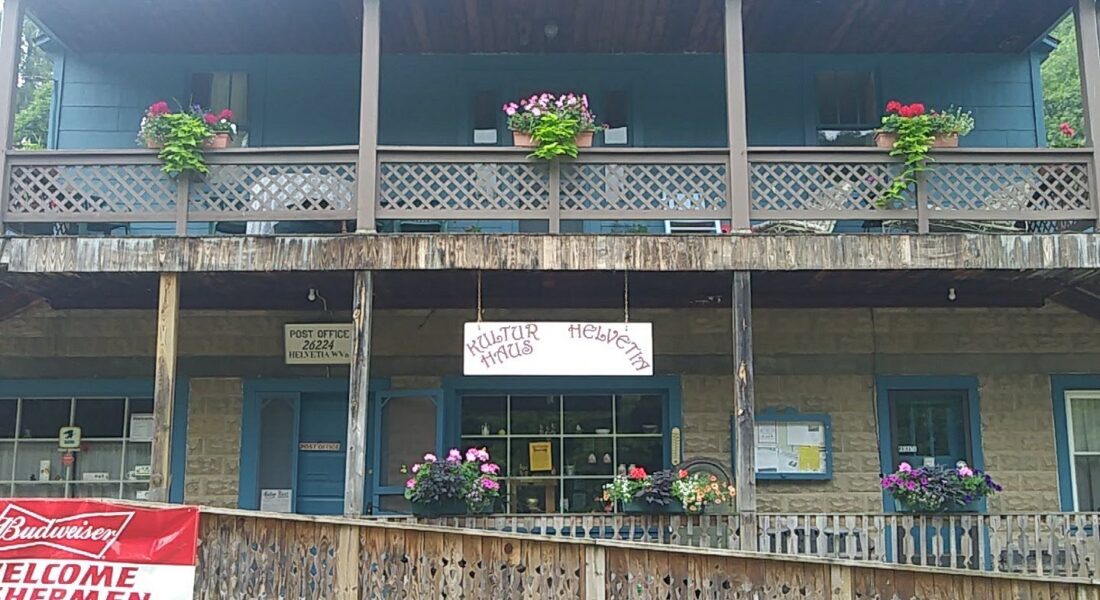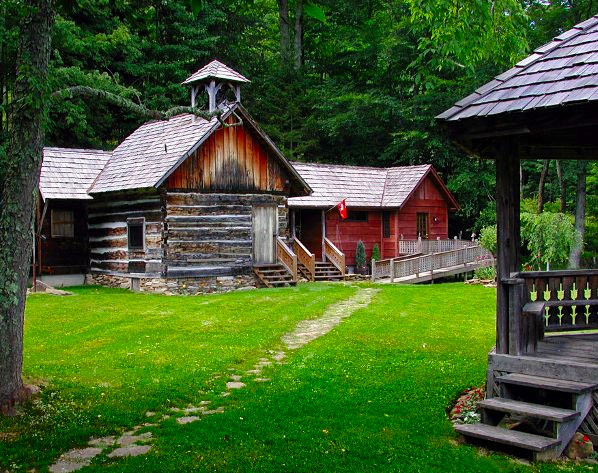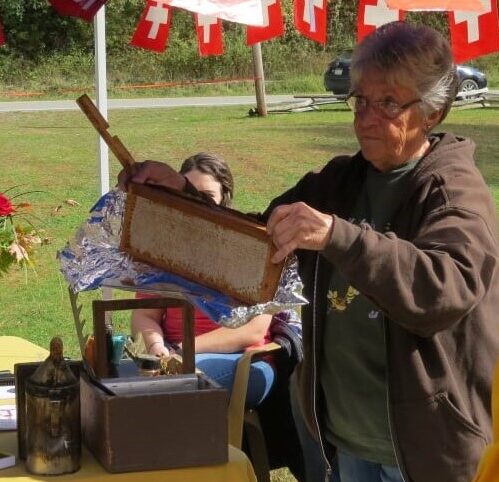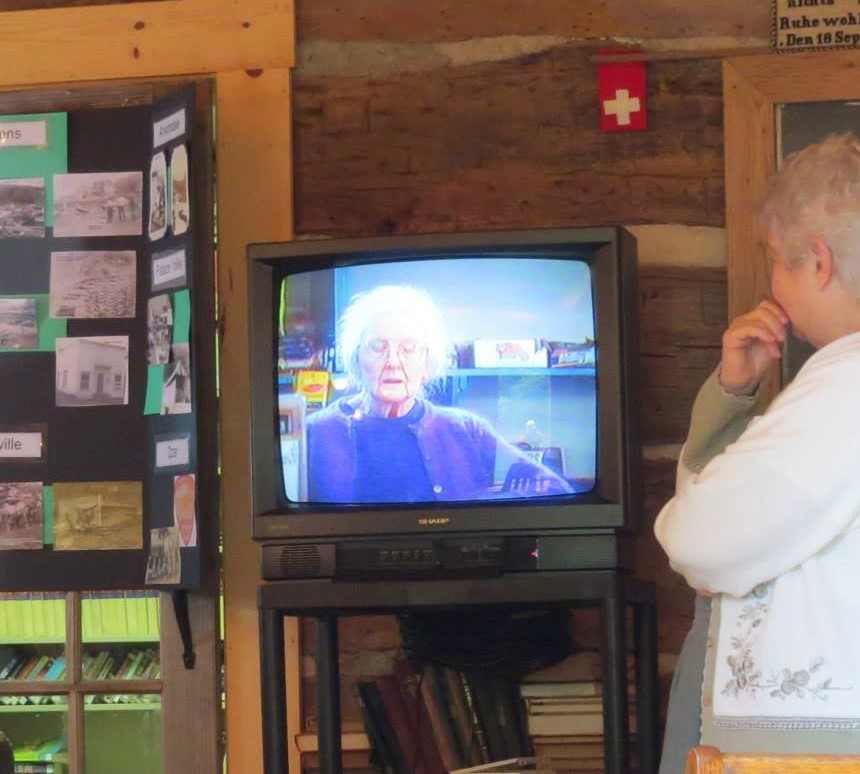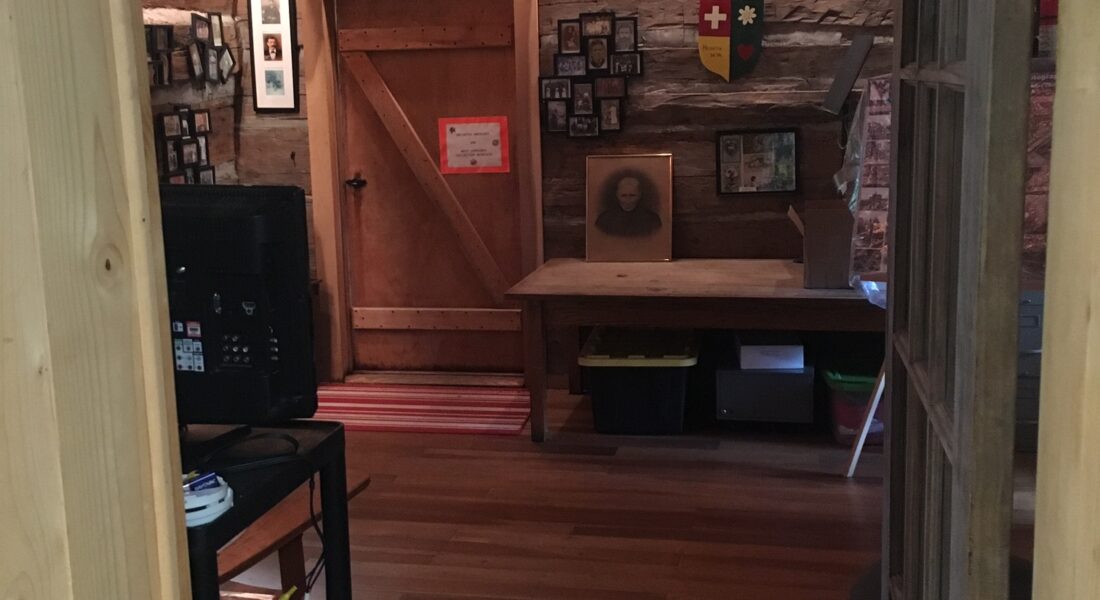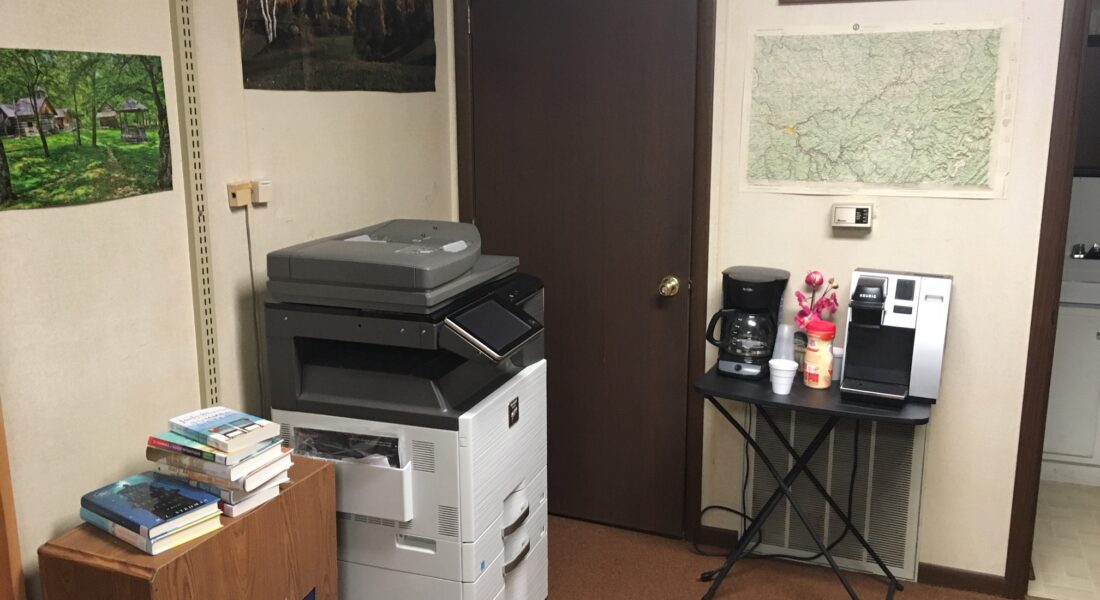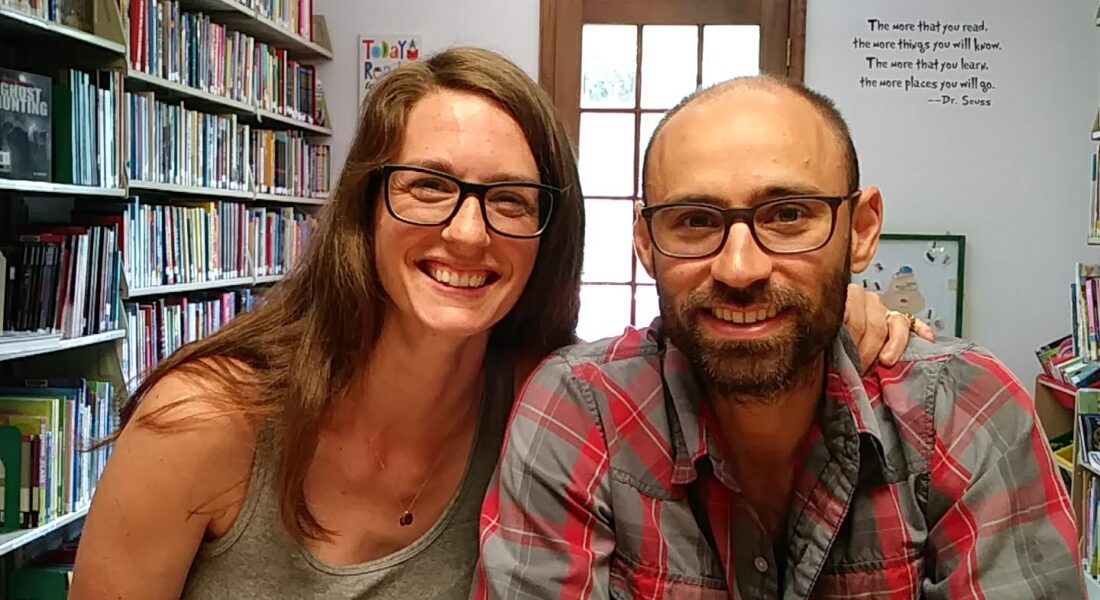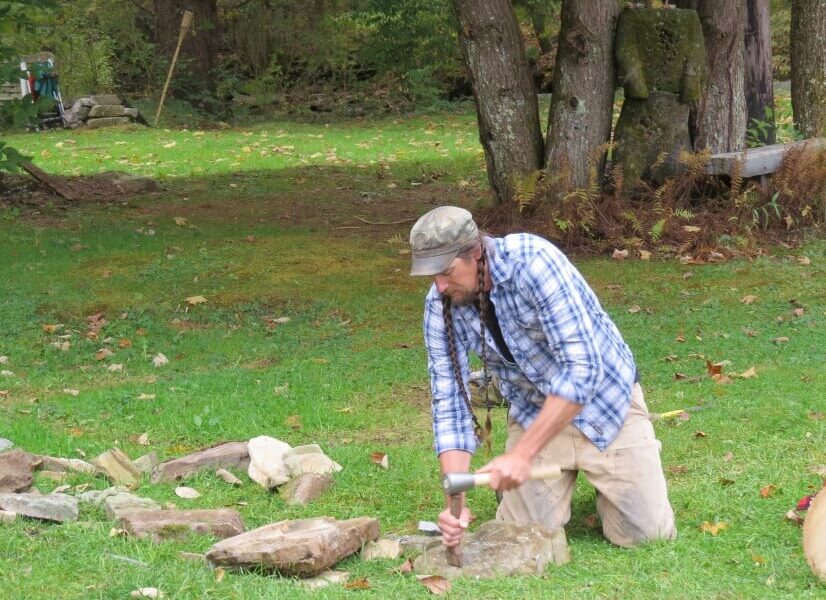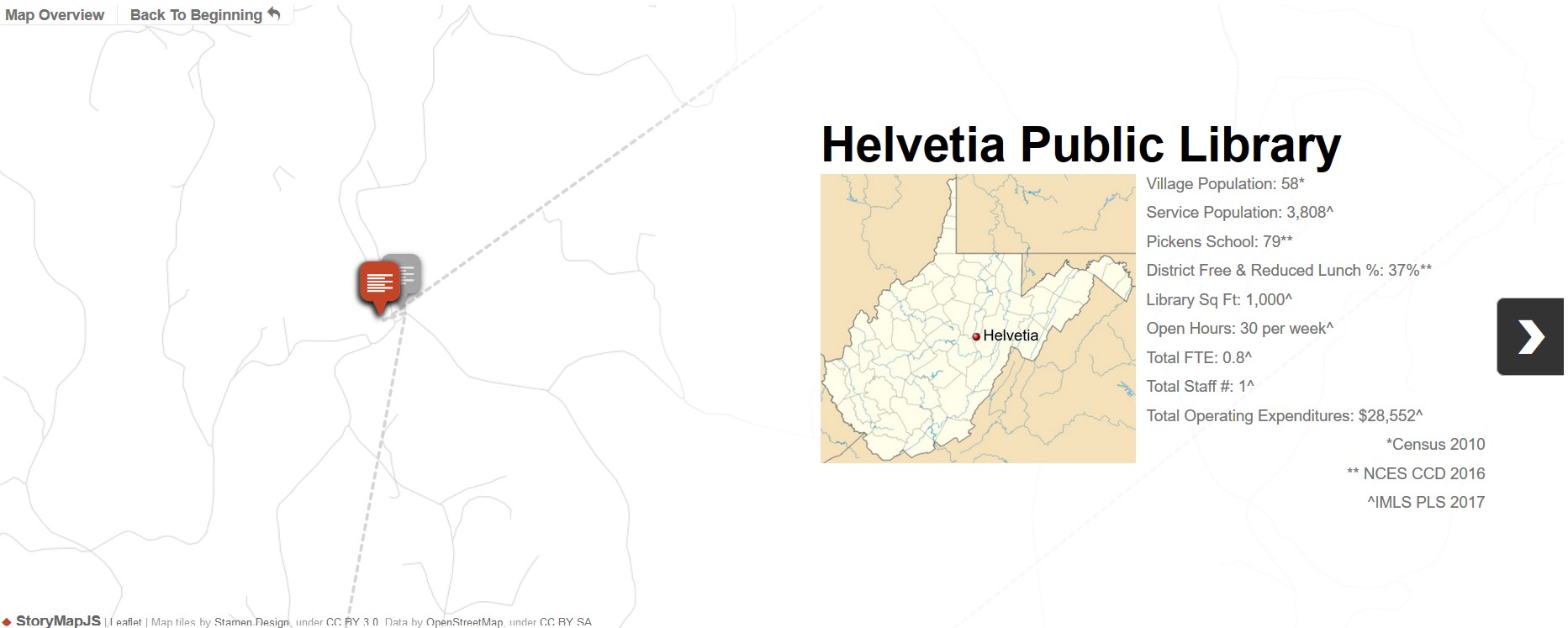
Pathways of Contribution Toward Belonging
Across remote rural locations, residents we interviewed expressed feelings of belonging often in terms directly tied to the ways in which they contributed to their community. We found that this reciprocity led to resident descriptions of feeling supported, as well as a sense of ownership over community life and institutions. Not mere niceties, research into community psychology, place-making, and attachment shows that these feelings can lead to more socially connected, physically healthier, happier individuals – even when controlling for income, age, and disability statuses. Although we heard about contribution in all eight communities, in Helvetia, West Virginia it was core to residents’ shared identity.
How Contribution is Evidenced in Helvetia
History of extraction (town was booming in the 1950’s but then there were no more trees to cut or coal seems to mine) – current residents don’t want new residents coming for the low cost of living without actively contributing to both the economy and the community. “Make sure you give back to that community because they were there first.” 1-3-04, 61:107 – message to future “creatives” who might get to move to a small community because of the internet, but not recognize the sense of place and its importance. “If something needs to be done it’s done within not too long a tie. We just had window boxes that were falling off you know, get the lumber. Get them together. Leroy put them together, Nancy put in the flowers. I mean it’s just so lovely. Everything just gets done.” 1-1-02 53:59
In Helvetia, to be known and help others to feel seen is a community value. As director Jerianne Davis describes it, feeling at home in a place is also to feel “part of something”. 1-1-01 52:3 Clara, who grew up in Helvetia, and returned with her husband to have a family shared “in Chicago you kind of get lost in the crowd. . . Nobody may even realize you’re there, need you…” 1-3-04, 61:5 Being seen means being needed.
Specific Belonging and Contribution Examples Witnessed
Governance of this unincorporated community runs through targeted committees. Supporting each other by letting people “be” without over involvement. “There’s no zoning rules there’s no regulations there’s nobody really watching you like the law enforcement. . . they say you know Heidi is going to come and tell you you know Heidi is going to get you for that if you don’t pick up your trash . . . an elder in the community . . . a natural like without it being a law enforcement type it’s just the elders . . . as long as you’re not hurting anybody.” 1-3-04 61:26
Because there is no bureaucratic super-structure, there is no pot of money or town council to go to for community maintenance. As Jonathon explained, the park exists because the community built the play equipment and the gazebo. The roof on the museum needs fixing and so the funds for materials will have to be raised and the labor “rallied” from the community to see the work gets done. 1-3-04
These organizations and committees transfer money between themselves and are largely funded from events specifically designed to bring in tourists. Those out of town visitors who are generationally tied to Helvetia sometimes return before the event to contribute their labor to set-up and host. Those without familial ties will contribute money through event tickets, food and drink purchases (often made and donated by Helvetia residents or the Hutte Restaurant), and donation jars. The associations and committees who host the near monthly community-wide events have non-profit designations, either through their own independent 501(c)3 status or as a sub-group.
Swiss Culture events (Fasnacht, Fall Festival and Craft Fair) are mixed with Appalachian events (musicians, Wild Ramp Supper, Maple Syrup Festival) throughout the year. Some current residents will talk about growing up in a larger community elsewhere and getting to come to the Maple Syrup Festival as a magical, special event. This culturally driven tourism is what “helps keep this community unique”. And all local hospitality is devotedly aligned with the village’s National Historic Site status, from the family owned Hutte Swiss Restaurant to the community-owned Kultur Haus with Alpine Lodge and Fasnacht Mask Museum. It has worked so well that the community at large has become used to media attention – some interviewees expected that the researchers would have a camera crew and production lights.
Want more help and labor in the community. More youth and vibrancy but not necessarily a numerical increase in the population. The need for active contributors is so profound that in order to maintain the current Helvetia event schedule requires a non-stop all-hands-on-deck approach. First time meeting goers will often find themselves president of a sub-committee or in charge of a major component of a community-wide event.
Upside of the same people being on all the committees is that communication is always thorough and collaborative partnership has become a way of life and major organizing principle.
“I think that honestly we’re doing quite well. But I think we’re so small that it’s just like oh my gosh we could literally slip to nothing if we’re not careful.” 1-3-04, 61:37; 1-3-01, 58:8 Events are held, in part, to entice young people in hopes they’ll move in. 1-1-02, 53:60
Family is a driver in community connection and action. 1-1-05 (about his dad but also about Heidi’s mom) Family support but also need a life which includes kids because there are no babysitters. 1-3-04, 61:98
Triad of mutual aid, freedom, and belonging describes Helvetia. Once can be private but maintain deep connections and systems of mutual aid. This is different, distinct from politics. It is individual, authentic, and loving. 1-3-01 58:1-2; 1-1-06, 57:1; “If I’m going through a struggle I have to do is pick up the phone and call and there’s going to be somebody there to listen to me.” A kind of bond 1-3-02. “We knew that he was going to be among people that he knew and cared and so yeah. So there was like a lot of gratitude back and forth between me and our family, our family and the community.”1-1-05, 56:28
“I want to spend the rest of my life here as an active part of the community.” 1-3-02, 59:3
Historically, people in Helvetia felt a sense of shared identity that aligned more closely with occupation than with Swiss culture – everyone was from a coal mining or lumbering family. 1-3-01, 58:3 As occupational identities receded with industry loss, Helvetia’s generations of Swiss actively engaged in their cultural heritage. And although generations which still spoke German and held old-world knowledge of traditions have passed on, dances, costumes, music, carpentry, and foods continue on. “that’s what makes Helvetia special.” 1-3-01 58:11
Visitors to major Helvetia events think Helvetia is a living history museum and come to expect the spectacle of their Swiss heritage to be continuous. Instead of just a town where people periodically celebrate. The people here are just living their lives in a community of their own creation. And although they need and desire tourists, they themselves are not a tourist attraction or exhibit for consumption. Which CAN be confusing for visitors as Helvetia – the town – is a National Historic Site. 1-3-04 61:59-62
Culture stays alive because people return to engage with it, even after they’ve grown and moved away for work. They return to play the alpine horn and dance with family and friends.
Within the unique context of Helvetia’s cultural continuity, community residents often had ideas for economic development which retained the shared cultural identity. Interestingly, with no or little prompting, nearly every person interviewers spoke with offered up their ideas for creating economic growth. In each case the idea was some extension of sustained cultural practice commodified so that the culture could ensure community economic sustainability. Reciprocity between economy and culture is a dominant thread in these interviews.
Being a Swiss settlement, many people from the US might think cheese would be a part of the local economy. It has only been within the last several years that dairy farming and the local cheese makers fresh milk went to have gone defunct. Cheese making is still a vital part of the cultural life of many community elders but the way they create it — the process that makes Helvetia cheese sought after — isn’t allowable for commercial sale according to the Health Department. Without a robust market for agricultural goods, those who still farm the mountains around the narrow valley now sell to other markets. Even the Honey Haus has closed down. When a return to an agricultural economy, which seems desirable to many residents, barriers are often described as insurmountable.
In addition to the structural barriers (Health Department codes, ease of access to multiple markets), some community elders describe a cultural shift among newer residents. They tell of a time when just getting to live in Helvetia was reward enough – there was no expectation of real financial gain. And people saw their labor as part of their contribution to the community, and their lifestyle. Independent business development everywhere, but especially in isolated rural communities, requires “perseverance” and uncommon commitment to place.
In keeping with a community culture of labor as contribution and support, the community itself employs some residents – for the library, the Kultur Haus (community-owned non-profit store and inn), village-wide mowing services. In Helvetia this weave of support for public employees isn’t frowned on, it is seen as sensible. Residents are clear about the different capacities of the broad variety of locals and how they want to and can contribute. Some folks are able and willing to do work that if left to volunteers would become too inconsistent to be useful.
What brings this quiet charm to life is the full intergenerational occupancy of this part of Helvetia. Helvetia, unlike many of its mountain counterparts nation-wide, is not a 3-season community. People who live here, live here year-round. In January and in June, they gather toddlers to nonagenarians to eat and dance and chat. The intergenerationality of Helvetia is at risk and many of the older people interviewed mention that seeing youth at community events is a highlight of their lives in town, and that they wish they had more. That wish for more kids is more than a wish for community sustainability. It is a recognition that we need to interact with people who are in different phases of their lives. And that in that diversity, we all gain something.
Dirt roads become all the more challenging in the wintertime, which can begin as early as October and not stop until May. The library plays an explicit role in mitigating the worst of the winter blues for residents by persisting in programming weekly throughout the winter. Jerianne doesn’t close the library in foul weather. Instead, she makes sure the heat and the coffee pot are both on. And if people need a break from their homes they can ford the snow drifts and walk in the door for social warmth.
Helvetia’s community is in part defined by the lack of division between labor and love. This whole approach to life in community creates an overall sense of wellbeing in everyone interviewed, regardless of work occupation or role on town committees. Work here is a way of life which supports feelings of belonging and being supported.
Library as Facilitator of Belonging and Contribution
In much the same way that library director Jerianne Davis is recognized as the unofficial face of Helvetia, the “library serves as a welcoming center.” It has the most open hours, it’s situated in a park that feels as though it was pulled straight from an 18th century frontier settlement with the local history museum right next door. When the library is open, Jerianne also opens the one room museum for visitors to wander into and enjoy at their own pace. The public library does what most do – offers climate controlled respite, but with an intentional strength in telling the story of Helvetia to all who would hear it.
Inception of the library as thrilling. From its inception a recognition that service had to be diverse and to meet people where they are – service to homebound patrons, movies to give social entertainment. Although the library began as a “traditional West Virginia outpost library”, funded by the state library commission in the early 1980s as part of an initiative to create more sustainable service to isolated bookmobile stops, it looks as though it was built on site by the Swiss of 1869. Betty, current library board president and first librarian in 1984 says that when they knew they were getting the library, they immediately got to work planning its aesthetic consistency with the rest of Helvetia. They negotiated with the state to allow them to make additions, to hang rough-hewn wood siding, and to create a look that matched their community identity.
Happily the state agreed. Helvetia Public Library is now three times the size of that original trailer and includes an incorporated one room schoolhouse as its archives room. Set behind a lovely grassy lawn park with gazebo, footbridge over a meandering creek, and beside a rough-hewn 19th century structure containing large artifacts from by-gone carpenters and farmers, to enter the library’s campus is to feel your whole self calm down.
Library provides the infrastructure and personable support community residents need to navigate. There is a general sense among community members that without the library in the valley, life in Helvetia would be overall impoverished – less literate, less culturally rich, less social, and less intergenerational.
People “work their butts off” to keep the community strong, and to bring people together, in all seasons of the year and of their lives.
The board believes that the library is to serve the community, wherever and however that need could be met. Meetings and gatherings happen at the library because the space is already climate controlled – heating or cooling a different shared space in town would be too costly just for a meeting.
Iris tells an excellent story about the library pathway to literacy and engagement with education: “You know it all comes back to so simple as picking the right book and someone getting them for you.” 1-3-01 58:23 Kids engage in learning because there is an adult person who shows authentic caring for them, and for their success at their own responsibilities. 1-3-01 58:24
Kids programming at the library provides important social infrastructure for parents living in the string of mountain communities Helvetia programs pull from. Where else could parents from Adolph hang out with parents from Pickens?
Library provides multiple pathways to ownership and belonging including having regular ways for people to support library events and happenings, contribute materials or ideas for what to buy for the collection, contribute family documents and genealogical texts to the archives and scan them for easier access.
Book Club – Gina won’t do anything in town, but she would do book club; Cece doesn’t always like the books for what anyone has to say, but likes getting together to talk about what she read. Learning as a public act, not “cooped up”
Director as Path Builder
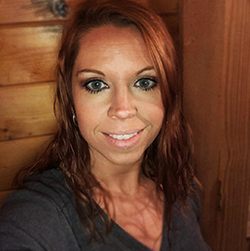
Jerianne’s approach to work is fully interwoven with all elements of community life.
Jerianne Davis was born in Helvetia and can trace a line of ancestry to the 19th century Swiss immigrants which gave this mountain farming community its name. At the time of this writing, Jerianne is the Vice President for the Helvetia Farm Women’s Club, and serves on the Director Board for Helvetia Fair, and Helvetia Restoration and Development Committee. Her house is catty corner to the library so it isn’t unheard of that she opens the library whenever a community member is in need. The evening before the research team arrived she had provided notary, document scanning, and faxing services to a family with an emergent need.
Anytime the interviewer pointed out the remarkable service she provided, Jerianne would say that anyone else would do the same. Indeed, throughout community interviews, stories of giving strangers impromptu genealogy tours, or providing childcare, or rebuilding a home after fire were all handled by the storyteller as if this was the natural and unremarkable way one would treat their neighbor.
Jerianne provides school library services as the public librarian to Pickens School. Although the practice was begun by Jerianne’s immediate predecessor Doug, the board indicates her work there has helped develop the public library’s overall youth program. They see the service as though the public library has a bookmobile stop at the neighbor town’s school.
The way Jerianne curates the weekly collection for the 31 K-12 students at Pickens flows directly from her passion for readers advisory. It means that she is selecting for children she knows and engages with. That individual care is seen everywhere in the physical library – here is the corner of “Elwood’s [Western] books”, the shelf of “Gina’s” small business collection, the low shelf with titles picked specifically for “the twins”. This curation with specific people in mind (there are no labels with names on them) translates to a well rounded, expertly chosen collection with real relevance to the people who use it. It also translates to a general sense of security among community residents and children attending Pickens that “Jerianne is here.”
Conclusion
When one moves from an urban environment with many active resources to a geographically isolated community includes a recognition that the public library is the community anchor. “We’ve . . . been able to come out of our home and be more involved in community, let’s say I have been reminded both generally and then specifically how much – how important this library is.” Love, caring, support, empowerment, and connection are all found in the Helvetia Public Library.
Related Resources
Pathways of Lifelong Learning toward Self-determination: New Mexico Case Study
Pathways of Home: Wisconsin Case Study
Awareness tool: Awakening to Community Potential
Awareness tool: Engaging with the Community on Wellbeing
Contribution tool: Pathways of Belonging: Contribution Assessment
Discover tool: Fostering Knowledge and Discovery
Listen to or read the interviews: Site 1 on Open Science Framework
My Year in Helvetia, West Virginia: a lifestyle exploration by the Bitter Southerner
Born in a Ballroom: documentary film about Helvetia matriarch Eleanor Mailloux
